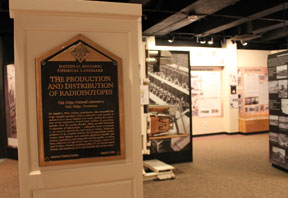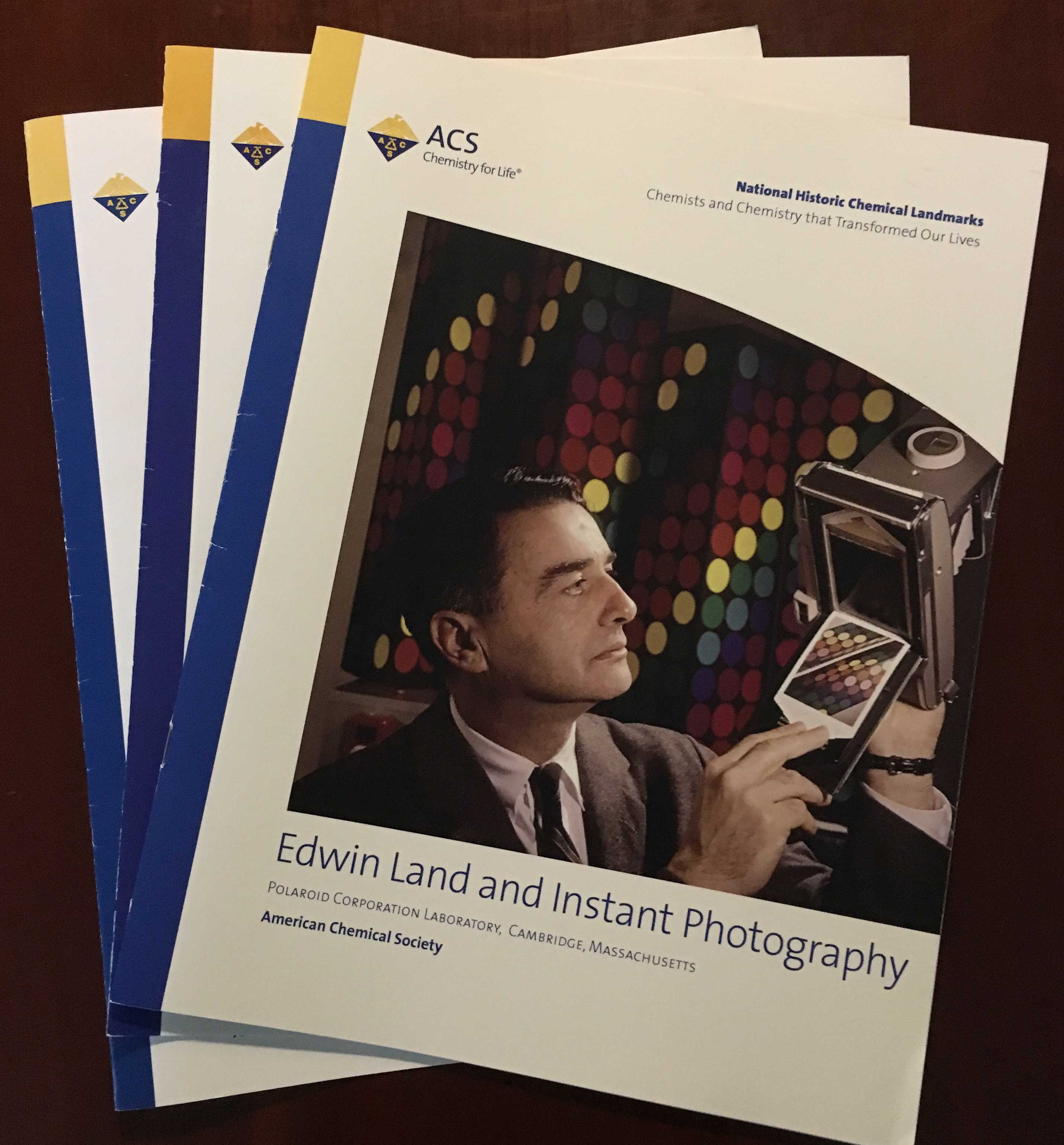Landmark Designation Planning
NHCL Designation Planning and Requirements
The NHCL program coordinates with host organizations and sponsoring ACS bodies to plan and execute commemorative events and perform long-term public outreach surrounding the designation of an ACS National Historic Chemical Landmark.
Following the approval of a nomination by PA&PR, an Organizing Committee should be established, including representatives from the host organization(s), nominator(s) and others with knowledge of the subject and/or experience in event planning. The Organizing Committee is responsible for planning and executing the designation ceremony and working with the NHCL Program Manager to produce materials for the designation.
This guide provides an overview of the various elements of the designation event and related outreach activities.
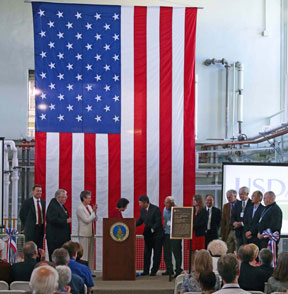
Components of an NHCL Designation
NHCL designations are comprised of the following basic elements: designation ceremony, historical marker, commemorative booklet and webpage, and public outreach. These elements are designed to commemorate the subject being honored, engage local audiences and provide information about the subject to local and online audiences.
Designation Ceremony
The basic program for an NHCL designation ceremony includes a welcome and introductions, presentation of an historical marker by a representative of ACS, and acceptance of the historical marker by a representative of the host organization. Additional components may be included at the discretion of the Organizing Committee—some may invite elected officials, institutional leaders, or outside subject matter experts to speak; others offer plant tours, symposia, or special programs as part of the celebration. Designations may be combined with another event or they may be stand-alone activities. A reception often accompanies the designation ceremony.
Designation ceremonies may be simple and inexpensive or they may be elaborate, depending on the Organizing Committee’s resources. Designations should be open to individuals affiliated with the host organization, local ACS members, journalists and members of the public.
The Organizing Committee is responsible for planning, funding and executing the designation ceremony in consultation with the NHCL Program Manager. In most cases, the host institution or ACS local section provide financial support and leadership for the designation ceremony.
Planning for the designation ceremony should begin at least six months before the event to provide sufficient time to identify a date and location, secure funding sources, assign responsibilities, arrange logistics and promote the ceremony.
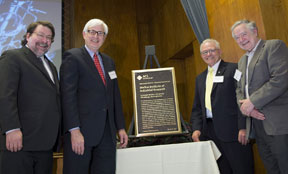
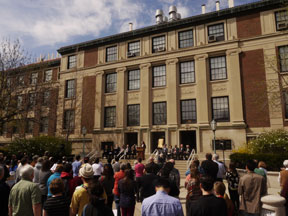
Historical Marker
To symbolize the designation of a Landmark, ACS presents the host organization with a bronze historical marker (approximate dimensions: 17” x 26”; approximate weight: 50 lbs.) to be permanently installed at a site of significance to the subject being honored. The marker bears the ACS logo, a brief description of the subject, the name of the host organization, names of significant contributors and the date of the designation ceremony. ACS expects the marker to be mounted for display in a publicly-accessible location and remain on display indefinitely. The marker may be mounted on a wall or incorporated into a free-standing display. It is suitable for display indoors or outdoors.
The NHCL Program Manager oversees the writing, design and fabrication of the historical marker in collaboration with the Organizing Committee and NHCL Subcommittee. The description must be between 100 and 125 words and written in language that is appropriate for public audiences. ACS assumes fabrication and shipping costs for one historical marker per designation. Nominators or host organizations may purchase additional markers from the fabricator.
Commemorative Booklet and Webpage
ACS publishes a commemorative booklet and webpage for each NHCL subject. These materials record the history of and provide information about landmark subjects for chemical professionals and the public.
The NHCL Program Manager oversees the writing, design and printing of the commemorative booklet and publication of the webpage in collaboration with the Organizing Committee and NHCL Subcommittee. The booklet is an ACS publication, and ACS retains ownership of the booklet and webpage. Host organizations are asked to provide historical images and assist ACS in obtaining rights for reproduction of copyrighted material.
ACS pays for the production, printing and shipping of up to 300 copies of the commemorative booklet per designation, as well as web hosting for online materials. Additional copies of the booklets may be purchased from the printer.
Public Outreach Activities
An NHCL designation ceremony is news. Why? Because a historic site is part of the community in which it is located. Members of the public, media and elected officials may take notice. Business and community leaders may as well.
ACS staff will help plan and implement a successful outreach effort. The NHCL Program Manager will collaborate with the Organizing Committee and host institution in the development of a public outreach plan for the designation ceremony. Examples include:
- public relations (issuance of a press release, invitations to local media, etc.)
- governmental outreach (requests for letters of support, invitations to elected officials, etc.)
Post-designation Expectations
The nominator and host organization are expected to recognize the Landmark on its webpage in an appropriate and accessible location and provide a link to the ACS webpage that details the achievement.
If an NHCL site undergoes a change in ownership (such as a merger or acquisition), ACS expects that the marker will be maintained in its original location. If an NHCL site is destroyed, abandoned, decommissioned or undergoes any other alteration that would render the site unsustainable, would disassociate the site from its historical context or would render the site off-limits to the public, ACS asks that the marker be reinstalled in an appropriate location (subject to approval by the NHCL Subcommittee) or be returned to the NHCL Program Manager.
The NHCL program encourages host organizations to observe other opportunities for outreach and promotion of the Landmark after the designation event, including anniversaries, symposia and other programming about the achievement.
Financial Considerations
The National Historic Chemical Landmark program offers limited support to organizing committees, nominators and host organizations for Landmark designation activities. Specifically, the NHCL program provides:
- one historical bronze marker per designation site;
- production and printing of up to 300 copies of the commemorative booklet per designation site;
- travel and related expenses for attendance of ACS staff and officials at each designation ceremony; and
- hosting of a webpage describing the subject on the ACS website.
Designation events are funded locally by nominators and host organizations. Expenses to be covered by the organizing committee, nominators and organizers may include the following:
- travel and related expenses for invited speakers and/or organizational leaders
- marketing and promotional materials
- catering
- racility rental
- all other expenses
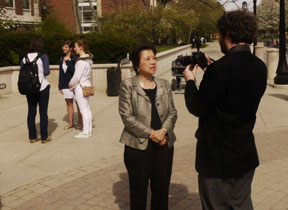
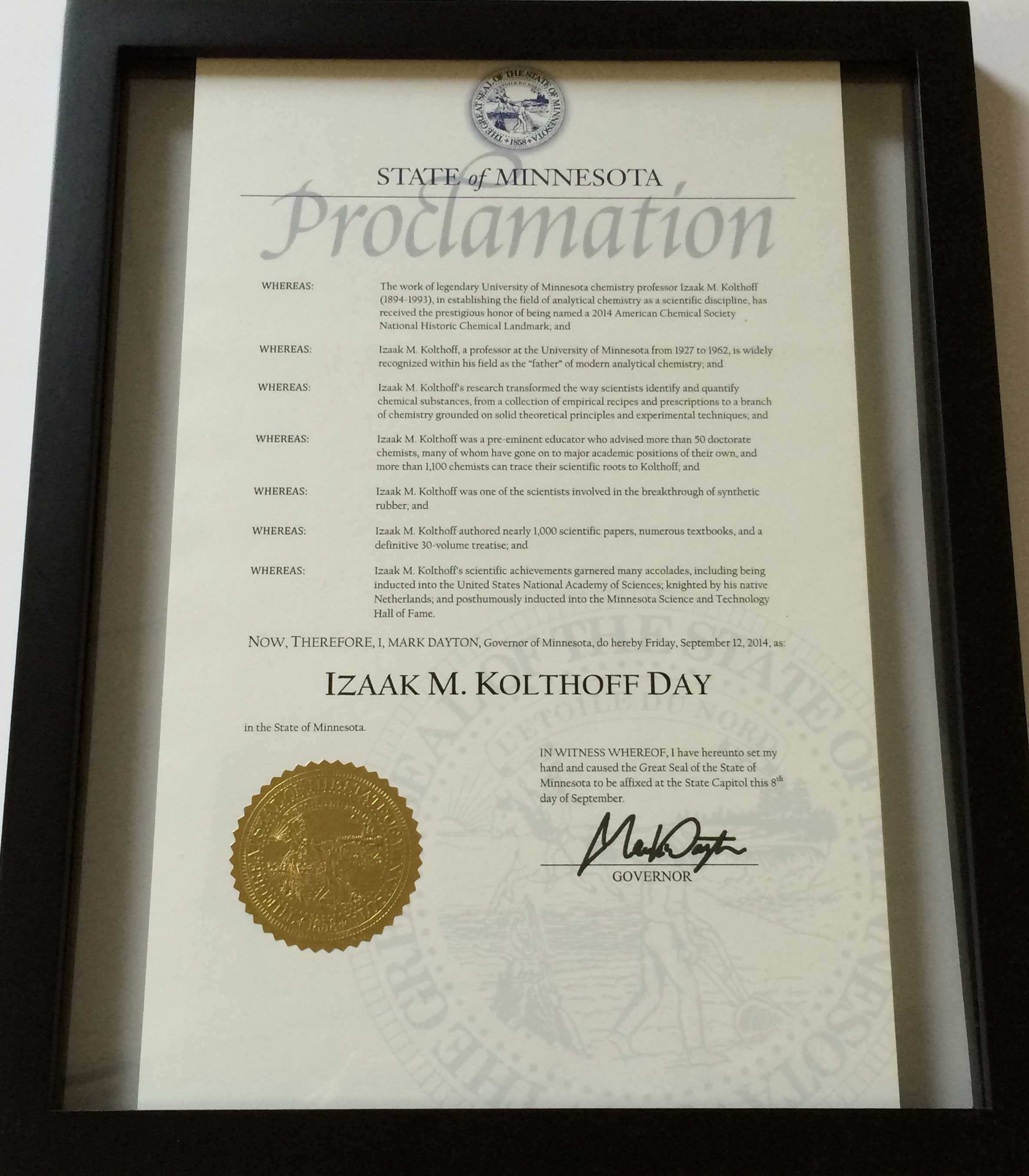
WHEREAS: The work of legendary University of Minnesota chemistry professor Izaak M. Kolthoff (1894-1993), in establishing the field of analytical chemistry as a scientific discipline, has received the prestigious honor of being named a 2014 American Chemical Society National Historic Chemical Landmark..."
— "Izaak M. Kolthoff Day" proclamation by Mark Dayton, Governor of Minnesota, Sept. 12, 2014

